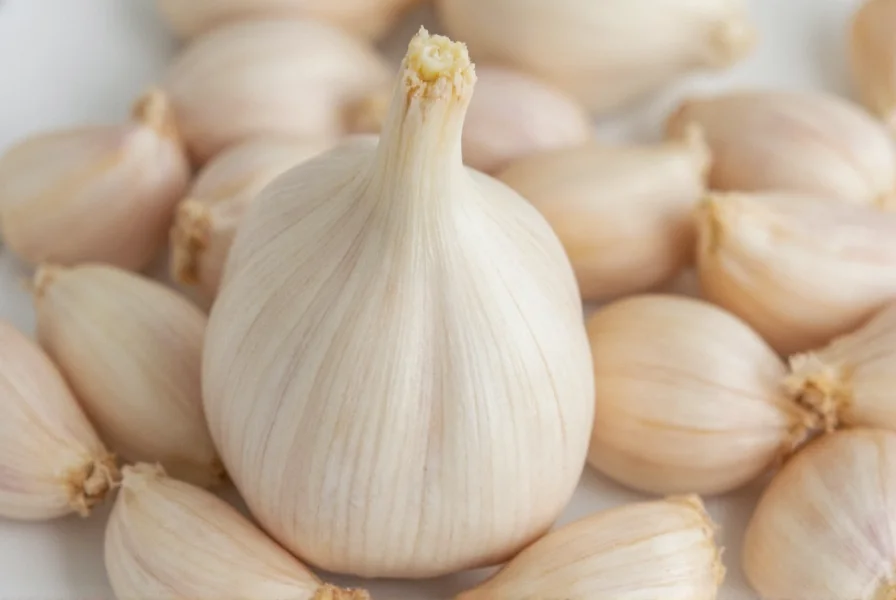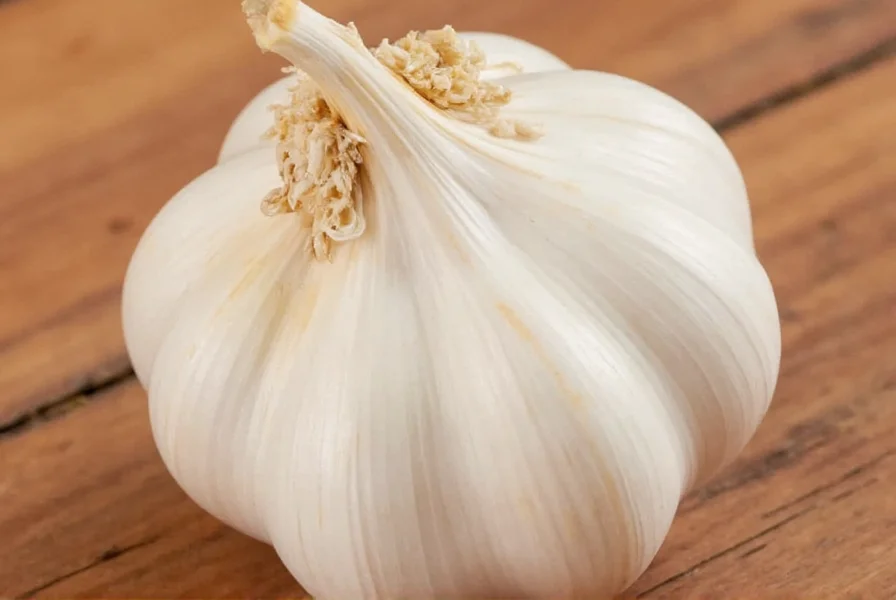Understanding garlic measurements is crucial for achieving the perfect flavor balance in your dishes. When recipes call for "teaspoons of garlic" but you're working with fresh cloves, knowing the precise conversion prevents under- or over-seasoning. Let's explore the details of garlic measurement conversions and how to apply them in your kitchen.
Garlic Clove Size Variations and Measurements
Garlic cloves vary significantly in size, which directly impacts their volume when prepared. The standard conversion assumes a medium-sized clove (about 1 inch long and 3/4 inch in diameter at its widest point). Here's a detailed breakdown:
| Garlic Clove Size | Whole Clove Weight | Minced Garlic | Chopped Garlic |
|---|---|---|---|
| Small | 3-5 grams | 1/4 teaspoon | 1/2 teaspoon |
| Medium (standard) | 6-9 grams | 1/2 teaspoon | 1 teaspoon |
| Large | 10-14 grams | 3/4-1 teaspoon | 1 1/2 teaspoons |
| Extra Large | 15+ grams | 1 1/4-1 1/2 teaspoons | 2 1/2 teaspoons |
Factors Affecting Garlic Measurement Accuracy
Several variables influence how many teaspoons a garlic clove yields:
- Preparation method: Minced garlic packs more densely than chopped, yielding less volume
- Moisture content: Freshly harvested garlic contains more moisture than stored garlic
- Compression: How firmly you pack the garlic into the measuring spoon
- Cultivar differences: Some garlic varieties have larger or smaller cloves by nature
For the most accurate measurements in precision-sensitive recipes, consider weighing your garlic. One medium clove typically weighs 6-9 grams, while minced garlic weighs approximately 2.8 grams per teaspoon.

When Precision Matters in Garlic Measurements
While approximate measurements work for many dishes, certain recipes demand precise garlic quantities:
- Delicate sauces where garlic can easily overpower other flavors
- Pickling and preserving where proper acid balance is critical
- Garlic-infused oils for food safety considerations
- Baking recipes incorporating garlic (like breads or crackers)
For everyday cooking, the standard conversion of one medium garlic clove equaling 1/2 teaspoon minced garlic works perfectly well. Most home cooks find this garlic to teaspoon conversion sufficient for achieving delicious results without overcomplicating the process.
Substituting Jarred Minced Garlic for Fresh Cloves
If you're using pre-minced garlic from a jar instead of fresh cloves, note that the conversion differs slightly due to added preservatives and liquid. Generally:
- 1 fresh medium garlic clove = 1/2 teaspoon fresh minced garlic
- 1 fresh medium garlic clove = 3/4 teaspoon jarred minced garlic
The difference accounts for the liquid preservatives in bottled garlic products. When substituting, you may want to reduce other liquids in your recipe slightly to maintain proper consistency.
Practical Tips for Measuring Garlic
Here are some professional kitchen-tested techniques for accurate garlic measurement:
- Minced garlic measurement is most accurate when packed lightly into the spoon
- For chopped garlic, measure after chopping but before pressing down
- When a recipe calls for "several cloves," estimate based on visual size comparison
- Keep a small kitchen scale handy for precision recipes
- Remember that roasted garlic yields slightly less volume than raw
Understanding how many teaspoons is a clove of garlic transforms your cooking experience, helping you achieve consistent results whether you're making a simple pasta dish or an elaborate gourmet meal. This garlic measurement knowledge is fundamental for any home cook looking to improve their culinary skills.

Common Garlic Measurement Questions Answered
How many garlic cloves equal 1 tablespoon of minced garlic?
Three medium garlic cloves equal approximately 1 tablespoon (3 teaspoons) of minced garlic. Since one medium clove yields about 1/2 teaspoon minced, you'll need three cloves to reach the tablespoon measurement. For small cloves, you'd need 6; for large cloves, only 2 would be necessary.
Does the age of garlic affect its measurement?
Yes, older garlic loses moisture and shrinks, so an older medium clove might yield slightly less minced garlic than a fresh one. Freshly harvested garlic contains more moisture and will produce slightly more volume when minced. For critical recipes, fresher garlic provides more consistent measurements.
How do I convert garlic powder to fresh garlic?
1/8 teaspoon garlic powder equals one fresh medium garlic clove. Garlic powder is more concentrated, so you need much less. This conversion is useful when fresh garlic isn't available, though the flavor profile differs slightly from fresh garlic.
Why does my minced garlic measurement seem inconsistent?
Inconsistency usually comes from varying preparation techniques. How finely you mince, how tightly you pack the spoon, and moisture content all affect volume. For consistent results, use the same mincing technique and light packing method each time. A kitchen scale provides the most reliable measurements for critical recipes.
Can I use garlic paste instead of fresh cloves?
Yes, 1/2 teaspoon of garlic paste equals one medium fresh garlic clove. Commercial garlic paste often contains citric acid as a preservative, which can slightly alter flavor. When substituting, you may want to reduce other acidic ingredients slightly in your recipe.










 浙公网安备
33010002000092号
浙公网安备
33010002000092号 浙B2-20120091-4
浙B2-20120091-4